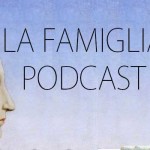Theverbessereisusedintheexpressionsc’èandcisono(thereis-thereare) followedbya singularorpluralnoun.Podcast.
C’èandcisono correspondtotheEnglishthereisandthereare. Asimplepostforbeginners
There’snoperfectmatchbetweenEnglishandItalian.Sometimesessereandesserci(tobeandtobethere)areinterchangeable.
Thenegativeformsare nonc’èand noncisono.
Afewnotes.Money(soldi)initalianisplural,people(gente)inItalianissingular,so”thereis”and”thereare”areobviouslyinverted.Theorderofthewordsinthesentencedoesn’tchangeinquestions.InItalian,whenyoudon’tneedinterrogativeadverbs(come,dove,quando,perchéetc…)we justaddaquestionmark.Soicanask:
- Mariononc’è?
- Nonc’ètempo?
Finally, fromalogicalpointofview,therearesomeverycommonItaliansentences(doublenegatives)thatinEnglishdon’tmakesense,butarecorrectinItalian.Forexample:
- Nonc’ènessuno -lit.Thereisn’tnobody
- Nonc’èniente-lit.Thereisn’tnothing
ThereareplentyoforedoublenegativesinItalian(withmai,nessuno,niente).Learn themastheyare.
Thanksforreading.VisitourhomepageandwinanItalianSkypeclasswithanativeteacher.
photocredit



